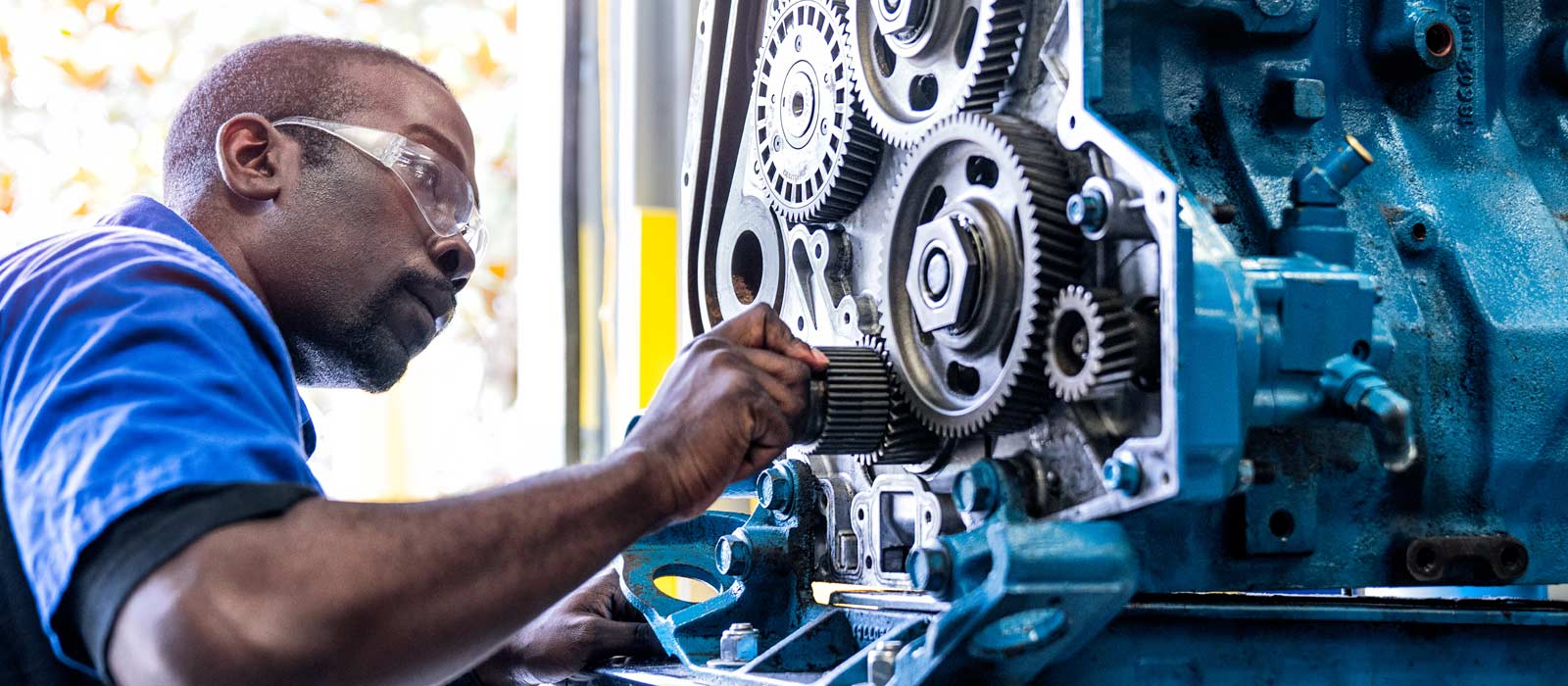Well Trained Drivers Lead to Improved Brake Safety
With the upcoming 2024 CVSA Brake Safety Week occurring August 25th–31st, what training can I provide my drivers to prevent brake adjustment violations?
Answer: With automatic slack adjusters on almost all commercial motor vehicles today, a portion of these violations can be attributed to the technical working of the automatic slack adjuster. Professional drivers will maintain a space cushion between them and the vehicles in front of them. When applying the brakes they will usually apply the brakes with 15% to 25% air application. Only in a defensive action will a driver apply the brakes with greater than 60% air application. These braking incidents are referred to as "Panic Stops" or "Rapid Deacceleration Occurrences". Analysis reflects that most professional drivers will require less than six of this type of brake application per 1,000 miles driven. Most International trucks are equipped with a "Stroke Sensitive" automatic adjuster. This type of slack adjuster adjusts the brakes on the return stroke. This adjustment occurs only when the application is greater than 60%. The better the driver the less opportunity there is for automatic brake adjustment. To ensure that the brakes are always in adjustment, we recommend the following:
1. During your Pre-trip inspection: Complete 10 full brake applications while the unit is parked. A slack adjuster will adjust approximately ? inch with every 10 full brake applications. Including this procedure as part of your pre-trip inspection will ensure that your brakes are always in adjustment. In the event of a roadside inspection, repeat this process prior to the inspection process. This will ensure that the automatic slack adjuster have the adjusted the brakes to compliance.
2. During your Pre-trip inspection: a driver is required by DOT to check the low air pressure-warning device. This should be audible at 60 psi. To check this device the air pressure must be lowered to 60 psi. If while accomplishing this portion of the inspection, a driver would fully apply and release, the air pressure should drop approximately 4 psi with each application.
Squeaking Brakes – Another condition attributed to "feathering, or low psi" brake applications is noisy brakes when stopping. Many times, this is created by crystallized lining, which occurs when the brakes are repeatedly applied with low psi applications. This can be minimized with four or five firm brake applications or rapid deacceleration stops. If your brakes are noisy, try bringing the vehicle to a stop with four or five firm brake applications each week. Always check to see that there are no vehicles following you when you perform this procedure.
For a complete set of Pre-trip and Post-trip instructions, refer to the cover of the IL-700 booklet in each Idealease vehicle. Safe driving includes a good pre-trip inspection before beginning each day's work. Make sure your brakes are always in top operating condition and inspect them often. Any defects or deficiencies to the brake system should be documented on the IL-700 DVIR and be reported to your superior or maintenance provider. The unit cannot be placed back into service until the defect or deficiency has been corrected or found to be unnecessary. The technician is then required to certify in writing on all copies of the IL-700 form that the repair or deficiency has been corrected.
Have your drivers watch the Idealease pre-trip and post-trip inspection training video:
Idealease Pre/Post Trip Inspection - Straight Truck
Idealease Pre/Post Trip Inspection- Straight Truck (Español)
Idealease Pre/Post Trip Inspection - Tractor Trailer
Idealease Pre/Post Trip Inspection - Tractor Trailer (Español)
Best Practice Guidelines for Roadside Inspections
- Train your drivers now how to complete good, quality pre-trip and post-trip inspections to reduce the possibility of violations.
- Review CSA SMS monthly at https://ai.fmcsa.dot.gov/SMS enter your DOT number or name, click on the different basics to view inspection information. Cross reference the inspections you have on file with the inspections turned in by your drivers. Question your drivers who do not submit inspection reports. Also review the history tab directly below the basics to determine if the number of inspections you are having is on the rise or decline.
- Review vehicle inspections and violations with your maintenance provider to reduce violations.
- Maintain copies, along with any repair orders attached if there were violations, in tractor and trailer file.
- Use the roadside inspection information, such as date, time, and locations to cross reference with the drivers hours of service documentation for falsification violations.
- Level One CVSA roadside inspections without violations can by regulation be substituted for the DOT annual Inspection.
- Train drivers how to successfully pass a roadside inspection and how to conduct themselves.
Download a copy of the CVSA International RoadCheck Vehicle Inspection Cheatsheet: https://www.cvsa.org/wp-content/uploads/International-Roadcheck-Vehicle-Inspection-Cheatsheet.pdf
CVSA's Brake Safety Week Scheduled for Aug. 25-31
The Commercial Vehicle Safety Alliance (CVSA) has announced Aug. 25-31 as the dates for this year’s Brake Safety Week.
Brake Safety Week is a commercial motor vehicle and driver inspection and regulatory compliance enforcement initiative, a brake-safety awareness and outreach opportunity, and a brake-related inspection and violation data-collection project.
Inspection and Enforcement
CVSA-certified inspectors will conduct routine commercial motor vehicle inspections throughout the week, focusing on brake systems and components. Commercial motor vehicles found to have brake-related out-of-service violations will be removed from roadways until those violations are corrected.
For this year’s Brake Safety Week, inspectors will focus on the condition of brake linings and pads. Brake lining and pad issues may result in vehicle violations and could affect a motor carrier’s safety rating.
In addition, some jurisdictions have performance-based brake testers (PBBT) and will be using them during Brake Safety Week. A PBBT is a machine that assesses the braking performance of a vehicle.










